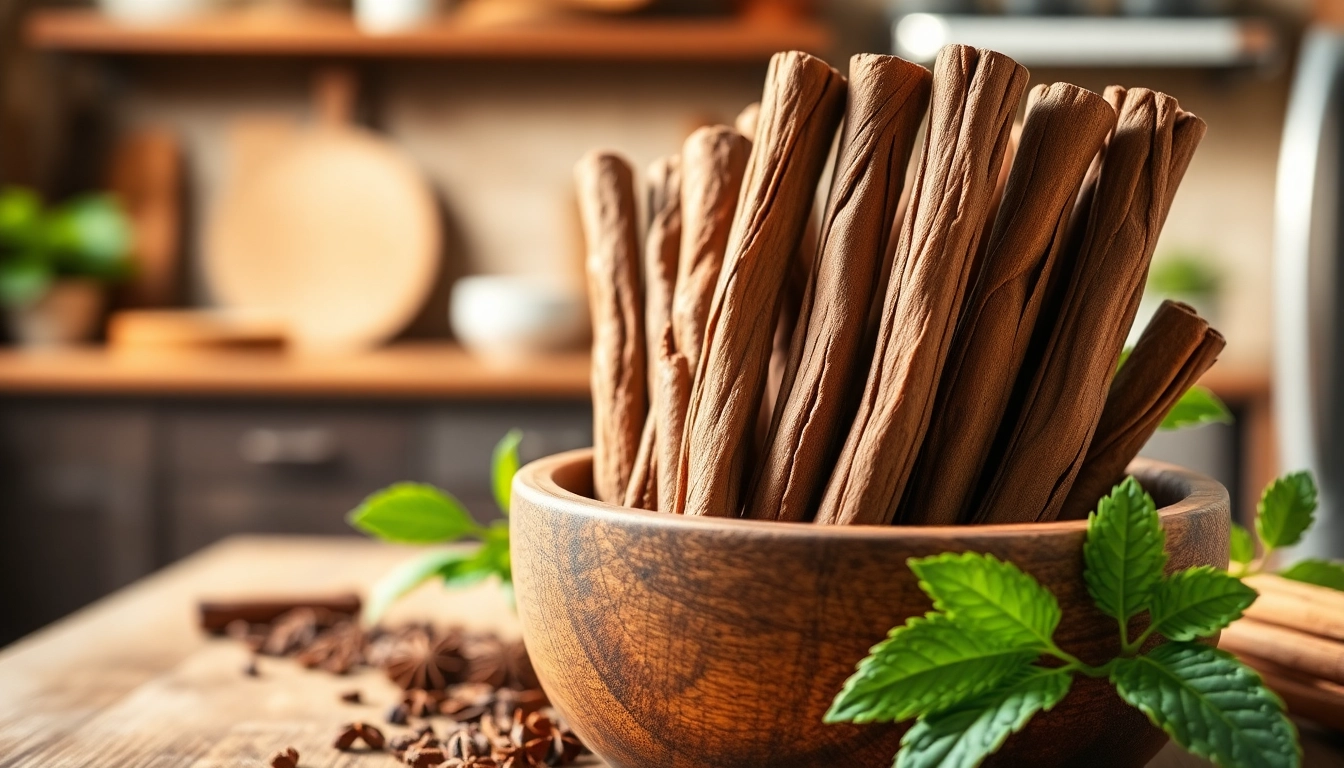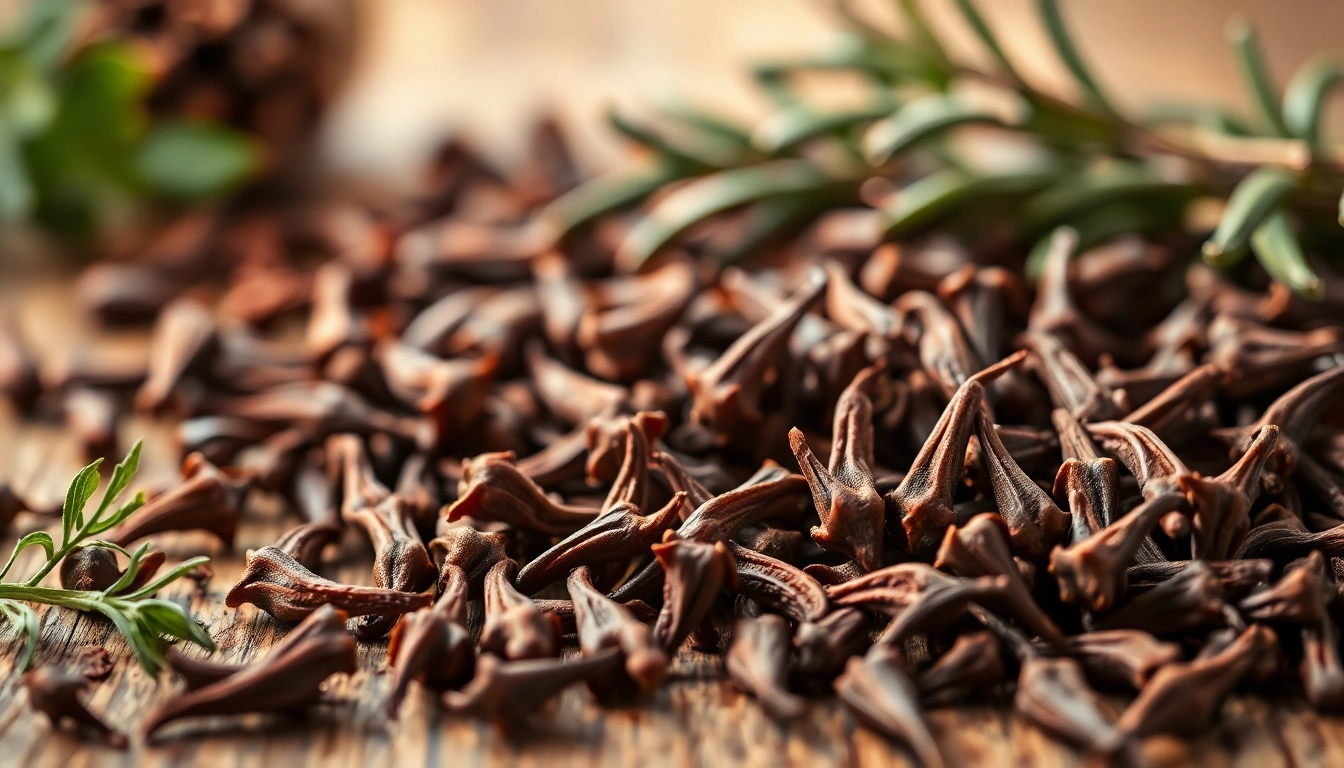Understanding Cinnamon Bark
Cinnamon bark, derived from the inner bark of several tree species belonging to the genus Cinnamomum, has been cherished for centuries not only for its warm, sweet flavor but also for its remarkable health benefits. This aromatic spice has found its way into culinary arts, herbal medicine, and natural remedies. For those interested in enhancing their wellness through natural products, Cinnamon Bark presents an excellent choice. In this article, we will explore its origins, types, nutritional profile, health benefits, culinary uses, purchasing tips, and its significance in natural remedies.
The Origins of Cinnamon Bark
Cinnamon has a rich history that dates back thousands of years. Its origins can be traced to ancient Egypt, where it was highly prized and even used in embalming practices. As trade routes expanded, cinnamon gained popularity across the Mediterranean and Asia, capturing the attention of explorers and merchants. The primary sources of commercial cinnamon today are Sri Lanka (for Ceylon cinnamon) and China (for Cassia cinnamon). The different climates and soils in these regions influence the flavor and quality of the cinnamon produced, contributing to its allure in global cuisine.
Types of Cinnamon Bark: Ceylon vs. Cassia
There are primarily two types of cinnamon bark available in the market: Ceylon and Cassia. Ceylon cinnamon, often termed ‘true cinnamon’, is harvested from the inner bark of the Cinnamomum verum tree and is known for its sweet, delicate flavor. It is more expensive and is considered to have a superior quality due to its low levels of coumarin, a compound that can be harmful in high doses.
In contrast, Cassia cinnamon, derived from Cinnamomum cassia, is the more commonly used variety and is often found in supermarkets. While it offers a bolder, spicier flavor, it contains higher concentrations of coumarin, which can present health risks if consumed excessively over time. Understanding these types can help consumers make better choices tailored to their culinary and health needs.
Nutritional Profile of Cinnamon Bark
Cinnamon bark is not only a flavorful spice but is also packed with essential nutrients. It comprises antioxidants, vitamins, and minerals that contribute to overall health. A teaspoon of ground cinnamon bark contains:
- Calories: 6
- Carbohydrates: 2 grams
- Fiber: 1 gram
- Manganese: 22% of the Daily Value (DV)
- Calcium: 4% of the DV
- Iron: 2% of the DV
This impressive nutrient profile positions cinnamon bark as a valuable addition to a balanced diet, promoting not only flavor but also nutritional benefits.
Health Benefits of Cinnamon Bark
Cinnamon bark has been used for its medicinal properties for centuries. Recent scientific studies have begun to substantiate these traditional claims, revealing a plethora of health benefits associated with its consumption.
Antioxidant Properties of Cinnamon Bark
Cinnamon bark is rich in powerful antioxidants, such as polyphenols, which help combat oxidative stress in the body. Oxidative stress is linked to various chronic diseases, including heart disease and diabetes. By including cinnamon bark in your diet, you may enhance your body’s defense against free radicals, thereby promoting overall health.
A study published in the journal Food Chemistry found that cinnamon extract inhibited the growth of certain bacteria and fungi, highlighting its role as a natural preservative and health enhancer.
Cinnamon Bark and Blood Sugar Control
One of the most notable health benefits of cinnamon bark is its ability to help regulate blood sugar levels. Research has shown that cinnamon can improve insulin sensitivity, lowering blood sugar levels after meals. This is particularly beneficial for individuals with type 2 diabetes or those at risk of developing the condition.
A study in the journal Diabetes Care concluded that participants who consumed cinnamon daily experienced significant reductions in fasting blood sugar levels. Although more research is needed, this finding has led many to consider cinnamon bark a natural aid in blood sugar management.
Potential Anti-Inflammatory Effects of Cinnamon Bark
Chronic inflammation is a precursor to many diseases, including heart disease and cancer. Cinnamon bark’s anti-inflammatory properties may offer protective benefits. Components in cinnamon, like cinnamaldehyde, have demonstrated potential in reducing inflammation by inhibiting the production of inflammatory cytokines.
This anti-inflammatory capability can help individuals manage conditions linked to inflammation, such as arthritis and other chronic pain conditions. Including cinnamon bark in your daily diet could contribute to a healthier inflammatory response across the body.
Cooking with Cinnamon Bark
Cinnamon bark is a versatile ingredient that can enhance a variety of dishes, both savory and sweet. Its warm flavor profile complements many foods and spices, making it a staple in kitchens worldwide.
Using Cinnamon Bark in Recipes
Cinnamon bark can be used in several culinary applications. It can be added to baked goods such as cinnamon rolls, cakes, and breads, where it enhances sweetness and adds depth of flavor. In savory dishes, it pairs magnificently with meats and stews, particularly in Middle Eastern and Indian cuisine.
To use cinnamon bark in cooking, it is common to add whole sticks to soups or stews, allowing its flavor to infuse. Alternatively, it can be ground for more immediate flavor release in baking or spice mixes. Experimenting with cinnamon bark can open up new dimensions in familiar recipes.
Infusing Oils and Drinks with Cinnamon Bark
Cinnamon bark’s flavor lends itself beautifully to infusions. You can create cinnamon-infused oils or syrups that can be drizzled over pancakes, waffles, or salads. Infusing oils with cinnamon bark is simple: gently heat your chosen oil with whole cinnamon sticks, and let it cool before storing it in a dark bottle.
Cinnamon also makes for a delightful addition to warm drinks. It can be steeped in hot tea, or added to coffee or hot chocolate, providing a spicy kick that warms the soul. This versatility makes cinnamon a favorite for creating comforting beverages.
Spice Blends Featuring Cinnamon Bark
Cinnamon bark is a key ingredient in numerous spice blends from around the globe. A traditional chai spice mix often incorporates cinnamon along with cardamom, cloves, and ginger, which creates a fragrant and warming beverage. Similarly, in pumpkin spice mixes, cinnamon plays a dominant role paired with nutmeg and allspice.
By creating your spice blends at home, you can tailor the ratios to suit your personal taste and dietary preferences. Adding cinnamon bark to sweet and savory spices elevates the complexity of flavors, providing a delicious impact on dishes.
Buying and Storing Cinnamon Bark
When considering adding cinnamon bark to your pantry, understanding how to choose and store it properly ensures you get the best quality and flavor.
What to Look for When Purchasing Cinnamon Bark
When purchasing cinnamon bark, consider whether you want stick or ground form. Whole cinnamon sticks tend to retain their flavor longer than ground cinnamon. Look for high-quality Ceylon cinnamon for a milder flavor, while Cassia cinnamon is often more accessible for everyday culinary uses.
Check the packaging for freshness dates and ensure the cinnamon has a strong, sweet aroma. If possible, purchase from health food stores or specialty spice shops known for their quality products. Organic options may offer additional benefits without synthetic pesticides.
Best Practices for Storing Cinnamon Bark
To keep cinnamon bark fresh, store it in a cool, dark place away from direct sunlight. Whole cinnamon sticks can last up to a few years if stored correctly. Ground cinnamon, however, has a shorter shelf life, typically about 6 months to a year.
Sealing spices in airtight containers helps to preserve their volatile oils, which are responsible for their aroma and flavor. Always label your containers with the purchase date to keep track of freshness.
Signs of Quality in Cinnamon Bark
Quality cinnamon bark should have a rich, aromatic scent and a smooth texture. When purchasing Ceylon cinnamon, look for its light brown color and thin, soft, multi-layered bark. Cassia cinnamon, meanwhile, will appear darker and have a more robust flavor profile. Ensure that there are no signs of mold or foreign substances, as this indicates low quality or improper storage.
Cinnamon Bark in Natural Remedies
Cinnamon bark has been used for centuries in natural remedies due to its purported health benefits. From digestive issues to respiratory problems, this spice has offered support in various forms of traditional medicine.
Traditional Uses of Cinnamon Bark in Herbal Medicine
In herbal medicine, cinnamon is revered for its antibacterial, antifungal, and antiviral properties. It’s been used to help alleviate cold symptoms, improve digestion, and even address issues like menstrual discomfort. The traditional use of cinnamon bark tea can soothe stomach cramps and stimulate digestion effectively.
Cinnamon Bark Essential Oil: Benefits and Uses
Cinnamon bark essential oil, extracted from the bark itself, carries many of its benefits in a highly concentrated form. The oil can be used topically (after dilution) for its anti-inflammatory properties or diffused into the air for its uplifting scent. This oil has also been studied for its potential effects against various pathogens and can be integrated into natural cleaning products for its antiseptic qualities.
Crafting Natural Remedies with Cinnamon Bark
With its myriad of applications, crafting your natural remedies using cinnamon bark can be both rewarding and beneficial. For instance, combining cinnamon bark with honey creates a soothing syrup for sore throats. Yet, caution should be exercised in terms of quality and concentration, especially for those with allergies or sensitivities to cinnamon.
Incorporate cinnamon bark into herbal teas, tinctures, or poultices as needed. As with all herbs and spices, consulting with a healthcare provider before using cinnamon bark for medicinal purposes is wise, especially for those on medication or with health conditions.




